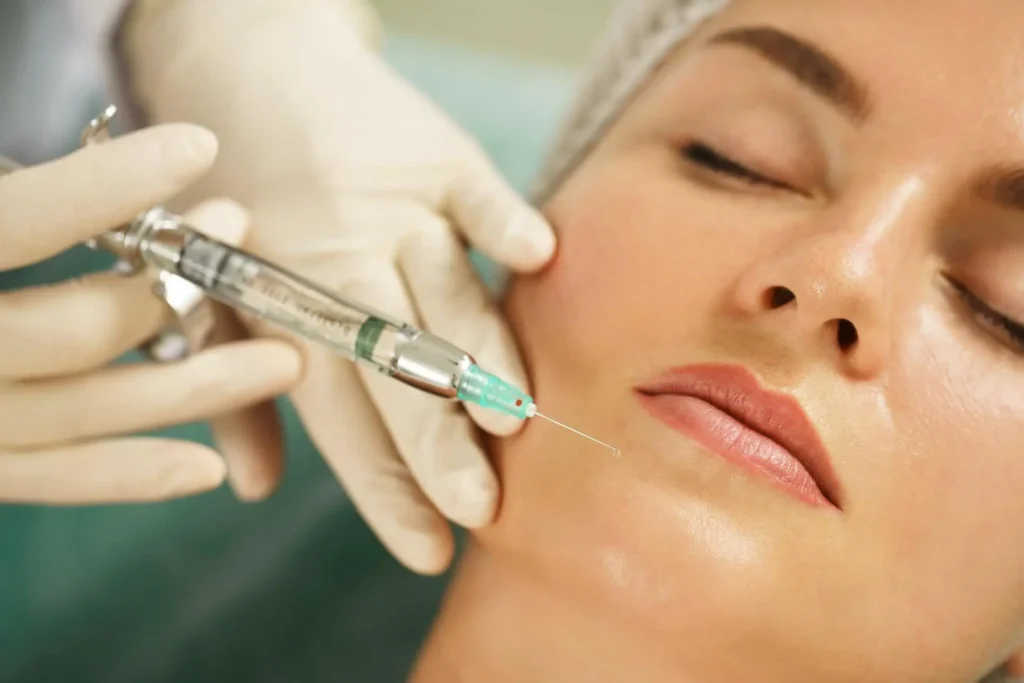Botox is widely known for cosmetic uses, but it’s also an FDA-approved treatment for chronic migraines. This offers relief to those who don’t respond to traditional therapies, as chronic migraines can cause severe, lasting pain. Botox has transformed migraine management for many by reducing the frequency and intensity of headaches.
How Does Botox Treat Migraines?
Botox works differently for migraines than it does for cosmetic purposes. While cosmetic botox targets specific facial muscles to reduce wrinkles, migraine treatment involves a more comprehensive approach across multiple areas of the head and neck. The treatment works by blocking nerve signals that contribute to migraine pain. Botox contains botulinum toxin type A, which temporarily prevents nerve endings from releasing chemicals involved in pain transmission. This interruption helps reduce the frequency and intensity of migraine episodes.
During a migraine treatment session, your healthcare provider will administer multiple small injections across specific points on your head, neck, and shoulders. These injection sites typically include the forehead, temples, back of the head, neck, and upper shoulders. The entire procedure usually takes about 15-20 minutes to complete.
The treatment targets trigger points where migraine pain often originates. By relaxing muscles and reducing nerve activity in these areas, botox can help prevent the cascade of events that leads to a full migraine episode. Many patients experience a reduction in both the frequency and severity of their migraines when they do occur.
How Long Does Relief Last?
Botox treatment for migraines provides relief that lasts approximately three to four months, similar to cosmetic Botox, as the body gradually metabolizes the botulinum toxin. Most patients start feeling relief within two to three weeks after their first treatment. Note that it is a preventive treatment, not a cure for active migraines. Its goal is to reduce the frequency and severity of future episodes.
For optimal results, patients typically require treatments every three to four months. Many report their migraines decrease by 50% or more after several sessions. While some notice improvements quickly, others may require two or three treatments to see significant benefits. Your healthcare provider will help create a treatment plan to maximize results.
Botox is for long-term migraine management, not immediate relief. For active migraines, you’ll still need your regular acute medications. Botox helps prevent future episodes.
Is Botox Approved for Migraines?
Yes, botox is FDA-approved specifically for treating chronic migraines in adults. The FDA granted this approval in 2010 after extensive clinical trials demonstrated its safety and effectiveness for migraine prevention. The approval specifically covers chronic migraines, which are defined as having 15 or more headache days per month, with at least 8 of those days involving migraine symptoms. This distinction is key because this treatment has not been approved for treating episodic migraines (fewer than 15 headache days per month).
Clinical studies showed that patients with chronic migraines experienced significant reductions in headache frequency when treated with botox compared to placebo treatments. These studies involved thousands of participants and demonstrated consistent results across different populations. The FDA approval means that botox for migraines meets strict safety and efficacy standards. Healthcare providers who administer this treatment have received specialized training in the proper injection techniques and dosing protocols specific to migraine treatment.
Consult a Specialist
Botox is an FDA-approved treatment for chronic migraines, offering relief by reducing migraine frequency. Unlike cosmetic uses, migraine treatment requires specialized expertise in injection techniques and dosing. If traditional treatments haven’t worked, botox could be a viable option. Contact a specialist to learn how it might help manage your migraines and improve your quality of life.

